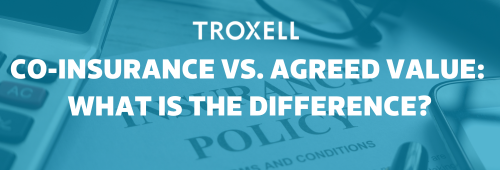
What is Co-Insurance?
Co-insurance is a term that refers to a type of insurance policy provision that requires the policyholder to insure their property to a certain value. In a standard policy, the policyholder and the insurance company agree to each pay a portion of the covered loss, based on the coverages and deductibles associated with the property.
Example of Co-Insurance:
If a policyholder has a co-insurance clause that requires 80% co-insurance, and the insured value of their property is $100,000, the policyholder must have insurance coverage of at least $80,000 in order to receive the full benefits of their policy. If the policyholder has coverage of less than $80,000, they will be responsible for a portion of the covered loss, based on the difference between the required coverage and the actual coverage.
In the event of a claim, co-insurance can impact the policyholder by reducing the amount of coverage they receive. If the policyholder does not have the required coverage in place, they will be responsible for paying a portion of the covered loss out of pocket, even if they have insurance. It's important to understand the terms of your insurance policy, including any co-insurance provisions, and to make sure that you have adequate coverage in place to protect your property.
What is an Agreed Value Endorsement?
Does the thought of co-insurance make you nervous? An agreed value endorsement is a type of endorsement or amendment to a property insurance policy that specifies a predetermined or "agreed upon" value for the insured property. This agreed value represents the maximum amount of insurance coverage that the policy will provide in the event of a covered loss. An agreed value endorsement can be used for various types of personal property, including but not limited to buildings, contents, vehicles, antiques, artwork, jewelry, collectibles, and other valuable items. The agreed value is typically determined by the policyholder and the insurance company at the time the policy is issued. It is based on a professional appraisal or other documentation of the value of the property.
The main advantage of an agreed value endorsement is that it provides the policyholder with a clear understanding of the level of coverage they have for their valuable property. In the event of a covered loss, the policyholder can be confident that they will receive the full agreed value, regardless of the current market value of the property at the time of the loss. It's important to note that agreed value endorsements are typically only available for specific types of personal property, and they may not be available to all policyholders. Additionally, there may be additional fees associated with obtaining an agreed value endorsement, and the policyholder may be required to provide proof of value, such as a recent appraisal, in order to obtain coverage.
If you have questions about co-insurance or are unsure about the level of coverage you need, it's a good idea to consult with an insurance professional at TROXELL who can help you determine the appropriate coverage for your specific needs.
This blog post was written by:
Ryan Augustine